- Home
- J. K. Rowling
Quidditch Through the Ages
Quidditch Through the Ages Read online
Foreword
QUIDDITCH THROUGH THE AGES is one of the most popular titles in the Hogwarts school library. Madam Pince, our librarian, tells me that it is ‘pawed about, dribbled on and generally maltreated’ nearly every day — a high compliment for any book. Anyone who plays or watches Quidditch regularly will relish Mr Whisp’s book, as do those of us interested in wider wizarding history. As we have developed the game of Quidditch, so it has developed us; Quidditch unites witches and wizards from all walks of life, bringing us together to share moments of exhilaration, triumph and (for those who support the Chudley Cannons) despair.
It was with some difficulty, I must own, that I persuaded Madam Pince to part with one of her books so that it might be copied for wider consumption. Indeed, when I told her it was to be made available to Muggles, she was rendered temporarily speechless and neither moved nor blinked for several minutes. When she came to herself she was thoughtful enough to ask whether I had taken leave of my senses. I was pleased to reassure her on that point and went on to explain why I had taken this unprecedented decision.
Muggle readers will need no introduction to the work of Comic Relief, so I now repeat my explanation to Madam Pince for the benefit of witches and wizards who have purchased this book. Comic Relief uses laughter to fight poverty, injustice and disaster. Widespread amusement is converted into large quantities of money (380 million dollars since they started in 1985 — over thirty-four million Galleons). By buying this book — and I would advise you to buy it, because if you read it too long without handing over money you will find yourself the object of a Thief’s Curse — you too will be contributing to this magical mission.
I would be deceiving my readers if I said that this explanation made Madam Pince happy about handing over a library book to Muggles. She suggested several alternatives, such as telling the people from Comic Relief that the library had burned down, or simply pretending that I had dropped dead without leaving instructions. When I told her that on the whole I preferred my original plan, she reluctantly agreed to hand over the book, though at the point when it came to let go of it, her nerve failed her and I was forced to prise her fingers individually from the spine.
Although I have removed the usual library-book spells from this volume, I cannot promise that every trace has gone. Madam Pince has been known to add unusual jinxes to the books in her care. I myself doodled absent-mindedly on a copy of Theories of Transubstantial Transfiguration last year and next moment found the book beating me fiercely around the head. Please be careful how you treat this book. Do not rip out the pages. Do not drop it in the bath. I cannot promise that Madam Pince will not swoop down on you, wherever you are, and demand a heavy fine.
All that remains is for me to thank you for supporting Comic Relief and to beg Muggles not to try Quidditch at home; it is, of course, an entirely fictional sport and nobody really plays it. May I also take this opportunity to wish Puddlemere United the best of luck next season.
Chapter One
The Evolution of the Flying Broomstick
No spell yet devised enables wizards to fly unaided in human form. Those few Animagi who transform into winged creatures may enjoy flight, but they arc a rarity. The witch or wizard who finds him- or herself Transfigured into a bat may take to the air, but, having a bat’s brain, they are sure to forget where they want to go the moment they take flight. Levitation is commonplace, but our ancestors were not content with hovering five feet from the ground. They wanted more. They wanted to fly like birds, but without the inconvenience of growing feathers.
We are so accustomed these days to the fact that every wizarding household in Britain owns at least one flying broomstick that we rarely stop to ask ourselves why. Why should the humble broom have become the one object legally allowed as a means of wizarding transport? Why did we in the West not adopt the carpet so beloved of our Eastern brethren? Why didn’t we choose to produce flying barrels, flying armchairs, flying bathtubs — why brooms?
Shrewd enough to see that their Muggle neighbours would seek to exploit their powers if they knew their full extent, witches and wizards kept themselves to themselves long before the International Statute of Wizarding Secrecy came into effect. If they were to keep a means of flight in their houses, it would necessarily be something discreet, something easy to hide. The broomstick was ideal for this purpose; it required no explanation, no excuse if found by Muggles, it was easily portable and inexpensive. Nevertheless, the first brooms bewitched for flying purposes had their drawbacks.
Records show that witches and wizards in Europe were using flying broomsticks as early as AD 962. A German illuminated manuscript of this period shows three warlocks dismounting from their brooms with looks of exquisite discomfort on their faces. Guthrie Lochrin, a Scottish wizard writing in 1107, spoke of the ‘splinter-filled buttocks and bulging piles’ he suffered after a short broom ride from Montrose to Arbroath.
A medieval broomstick on display in the Museum of Quidditch in London gives us an insight into Lochrin’s discomfort (see Fig. A). A thick knotty handle of unvarnished ash, with hazel twigs bound crudely to one end, it is neither comfortable nor aerodynamic. The charms placed upon it arc similarly basic: it will only move forwards at one speed; it will go up, down and stop.
As wizarding families in those days made their own brooms, there was enormous variation in the speed, comfort and handling of the transport available to them. By the twelfth century, however, wizards had learned to barter services, so that a skilled maker of brooms could exchange them for the potions his neighbour might make better than himself. Once broomsticks became more comfortable, they were flown for pleasure rather than merely used as a means of getting from point A to point B.
Chapter Two
Ancient Broom Games
Broom sports emerged almost as soon as broomsticks were sufficiently advanced to allow fliers to turn corners and vary their speed and height. Early wizarding writings and paintings give us some idea of the games our ancestors played. Some of these no longer exist; others have survived or evolved into the sports we know today.
The celebrated annual broom race of Sweden dates from the tenth century. Fliers race from Kopparberg to Arjeplog, a distance of slightly over three hundred miles. The course runs straight through a dragon reservation and the vast silver trophy is shaped like a Swedish Short-Snout. Nowadays this is an international event and wizards of all nationalities congregate at Kopparberg to cheer the starters, then Apparate to Arjeplog to congratulate the survivors.
The famous painting Günther der Gewaltig ist der Gewinner (‘Gunther the Violent is the Winner’), dated 1105, shows the ancient German game of Stichstock. A twenty-foot-high pole was topped with an inflated dragon bladder. One player on a broomstick had the job of protecting this bladder. The bladder-guardian was tied to the pole by a rope around his or her waist, so that he or she could not fly further than ten feet away from it. The rest of the players would take it in turns to fly at the bladder and attempt to puncture it with the specially sharpened ends of their brooms. The bladder-guardian was allowed to use his or her wand to repel these attacks. The game ended when the bladder was successfully punctured, or the bladder-guardian had either succeeded in hexing all opponents out of the running or collapsed from exhaustion. Stichstock died out in the fourteenth century.
In Ireland the game of Aingingein flourished, the subject of many an Irish ballad (the legendary wizard Fingal the Fearless is alleged to have been an Aingingein champion). One by one the players would take the Dom, or ball (actually the gallbladder of a goat), and speed through a series of burning barrels set high in the air on stilts. The Dom was to be thrown through the final barrel. The playe
r who succeeded in getting the Dom through the last barrel in the fastest time, without having caught fire on the way, was the winner.
Scotland was the birthplace of what is probably the most dangerous of all broom games — Creaothceann. The game features in a tragic Gaelic poem of the eleventh century, the first verse of which says, in translation:
The players assembled, twelve fine, hearty men,
They strapped on their cauldrons, stood poised to fly,
At the sound of the horn they were swiftly airborne
But ten of their number were fated to die.
Creaothceann players each wore a cauldron strapped to the head. At the sound of the horn or drum, up to a hundred charmed rocks and boulders that had been hovering a hundred feet above the ground began to fall towards the earth. The Creaothceann players zoomed around trying to catch as many rocks as possible in their cauldrons. Considered by many Scottish wizards to be the supreme test of manliness and courage, Creaothceann enjoyed considerable popularity in the Middle Ages, despite the huge number of fatalities that resulted from it. The game was made illegal in 1762, and though Magnus ‘Dent-Head’ Macdonald spearheaded a campaign for its reintroduction in the 1960s, the Ministry of Magic refused to lift the ban.
Shuntbumps was popular in Devon, England. This was a crude form of jousting, the sole aim being to knock as many other players as possible off their brooms, the last person remaining on their broom winning.
Swivenhodge began in Herefordshire. Like Stichstock, this involved an inflated bladder, usually a pig’s. Players sat backwards on their brooms and batted the bladder backwards and forwards across a hedge with the brush ends of their brooms. The first person to miss gave their opponent a point. First to reach fifty points was the winner.
Swivenhodge is still played in England, though it has never achieved much widespread popularity; Shuntbumps survives only as a children’s game. At Queerditch Marsh, however, a game had been created that would one day become the most popular in the wizarding world.
Chapter Three
The Game from Queerditch Marsh
We owe our knowledge of the rude beginnings of Quidditch to the writings of the witch Gertie Keddle, who lived on the edge of Queerditch Marsh in the eleventh century. Fortunately for us, she kept a diary, now in the Museum of Quidditch in London. The excerpts below have been translated from the badly spelled Saxon of the original.
Tuesday. Hot. That lot from across the marsh have been at it again. Playing a stupid game on their broomsticks. A big leather ball landed in my cabbages. I hexed the man who came for it. I’d like to see him fly with his knees on back to front, the great hairy hog,
Tuesday. Wet. Was out on the marsh picking nettles. Broomstick idiots playing again. Watched for a bit from behind a rock. They’ve got a new ball. Throwing it to each other and trying to stick it in trees at either end of the marsh. Pointless rubbish.
Tuesday. Windy, Gwenog came for nettle tea, then invited me out for a treat. Ended up watching those numbskulls playing their game on the marsh. That big Scottish warlock from up the hill was there. Now they’ve got two big heavy rocks flying around trying to knock them all off their brooms. Unfortunately didn’t happen while I was watching. Gwenog told me she often played herself. Went home ill disgust.
These extracts reveal much more than Gertie Keddle could have guessed, quite apart from the fact that she only knew the name of one of the clays of the week. Firstly, the ball that landed in her cabbage patch was made of leather, as is the modern Quaffle — naturally, the inflated bladder used in other broom games of the period would be difficult to throw accurately, particularly in windy conditions. Secondly, Gertie tells us that the men were ‘trying to stick it in trees at either end of the marsh’ apparently an early form of goal scoring. Thirdly, she gives us a glimpse of the forerunners of Bludgers. It is immensely interesting that there was a ‘big Scottish warlock’ present. Could he have been a Creaothceann player? Was it his idea to bewitch heavy rocks to zoom dangerously around the pitch, inspired by the boulders used in his native game?
We find no further mention of the sport played on Queerditch Marsh until a century later, when the wizard Goodwin Kneen took up his quill to write to his Norwegian cousin Olaf. Kneen lived in Yorkshire, which demonstrates the spread of the sport throughout Britain in the hundred years after Gertie Keddle first witnessed it. Kneen’s letter is deposited in the archives of the Norwegian Ministry of Magic.
Dear Olaf,
How are you? I am well, though Gunhilda has got a touch of dragon pox.
We enjoyed a spirited game of Kwidditch last Saturday night, though poor Gunhilda was not up to playing Catcher, and we had to use Radulf the blacksmith instead. The team from Ilkley played well though was no match for us, for we had been practising hard all month and scored forty-two times. Radulf got a Blooder in the head because old Ugga wasn’t quick enough with his club. The new scoring barrels worked well. Three at each end on stilts, Oona from the inn gave us them. She let us have free mead all night because we won as well. Gunhilda was a bit angry I got back so late. I had to duck a couple of nasty jinxes but I’ve got my fingers back now.
I'm sending this with the best owl I’ve got, hope he makes it.
Your cousin,
Goodwin
Here we see how far the game has progressed in a century. Goodwin’s wife was to have played ‘Catcher’ — probably the old term for Chaser. The ‘Blooder’ (undoubtedly Bludger) that hit Radulf the blacksmith should have been fended off by Ugga, who was obviously playing Beater, as he was carrying a club. The goals are no longer trees, but barrels on stilts. One crucial element in the game was still missing, however: the Golden Snitch. The addition of the fourth Quidditch ball did not occur until the middle of the thirteenth century and it came about in a curious manner.
Chapter Four
The Arrival of the Golden Snitch
From the early 1100s, Snidget-hunting had been popular among many witches and wizards. The Golden Snidget (see Fig. B) is today a protected species, but at that time Golden Snidgets were common in northern Europe, though difficult to detect by Muggles because of their aptitude at hiding and their very great speed.
The diminutive size of the Snidget, coupled with its remarkable agility in the air and talent at avoiding predators, merely added to the prestige of wizards who caught them. A twelfth-century tapestry preserved in the Museum of Quidditch shows a group setting out to catch a Snidget. In the first portion of the tapestry, some hunters carry nets, others use wands, and still others attempt to catch the Snidget with their bare hands. The tapestry reveals the fact: that the Snidget was often crushed by its captor. In the final portion of the tapestry we see the wizard who caught the Snidget being presented with a bag of gold.
Snidget-hunting was reprehensible in many ways. Every right-minded wizard must deplore the destruction of these peace-loving little birds in the name of sport. Moreover, Snidget-hunting, which was usually undertaken in broad daylight, led to more Muggle broomstick sightings than any other pursuit. The Wizards’ Council of the time, however, was unable to curb the sport’s popularity — indeed, it appears that the Council itself saw little wrong with it, as we shall see.
Snidget-hunting finally crossed paths with Quidditch in 1269 at a game attended by the Chief of the Wizards’ Council himself, Barberus Bragge. We know this because of the eyewitness account sent by Madam Modesty Rabnott of Kent to her sister Prudence in Aberdeen (this letter is also on display in the Museum of Quidditch). According to Madam Rabnott, Bragge brought a caged Snidget to the match and told the assembled players that he. would award one hundred and fifty Galleons1 to the player who caught it during the course of the game. Madam Rabnott explains what happened next:
The players rose as one into the air, ignoring the Quaffle and dodging the Blooders. Both Keepers abandoned the goal baskets and joined the hunt. The poor little Snidget shot up and down the pitch seeking a means of escape, but the wizards in the crowd forced it back w
ith Repelling Spells. Well, Pru, you know how I am about Snidget-hunting and what I get like when my temper goes. I ran onto the pitch and screamed, ‘Chief Bragge, this is not sport! Let the Snidget go free and let us watch the noble game of Cuaditch which we have all come to see!’ If you’ll believe me, Pru, all the brute did was laugh and throw the empty birdcage at me. Well, I saw red, Pru, I really did. When the poor little Snidget flew my way I did a Summoning Charm. You know how good my Summoning Charms are, Pru — of course it was easier for me to aim properly, not being mounted on a broomstick at the time. The little bird came zooming into my hand. I stuffed it down the front of my robes and ran like fury.
Well, they caught me, but not before I’d got out of the crowds and released the Snidget. Chief Bragge was very angry and for a moment I thought I’d end up a horned toad, or worse, but luckily his advisers calmed him down and I was only fined ten Galleons for disrupting the game. Of course I’ve never had ten Galleons in my life, so that’s the old home gone.
I’ll be coming to live with you shortly, luckily they didn’t take the Hippogriff. And I’ll tell you this, Pru, Chief Bragge would have lost my vote if I’d had one.
Your loving sister,
Modesty

 Harry Potter and the Philosophers Stone
Harry Potter and the Philosophers Stone Harry Potter and the Chamber of Secrets
Harry Potter and the Chamber of Secrets Harry Potter and the Goblet of Fire
Harry Potter and the Goblet of Fire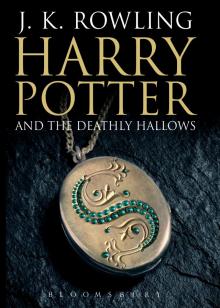 Harry Potter and the Deathly Hallows
Harry Potter and the Deathly Hallows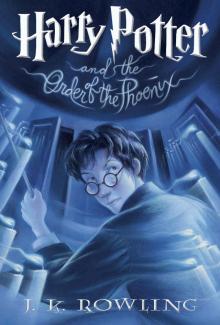 Harry Potter and the Order of the Phoenix
Harry Potter and the Order of the Phoenix Harry Potter and the Half-Blood Prince
Harry Potter and the Half-Blood Prince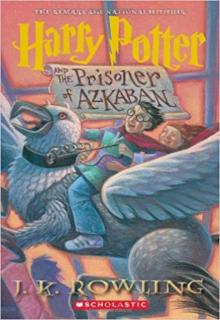 Harry Potter and the Prisoner of Azkaban
Harry Potter and the Prisoner of Azkaban Fantastic Beasts and Where to Find Them
Fantastic Beasts and Where to Find Them Short Stories from Hogwarts of Heroism, Hardship and Dangerous Hobbies
Short Stories from Hogwarts of Heroism, Hardship and Dangerous Hobbies Hogwarts: An Incomplete and Unreliable Guide
Hogwarts: An Incomplete and Unreliable Guide The Tales of Beedle the Bard
The Tales of Beedle the Bard The Casual Vacancy
The Casual Vacancy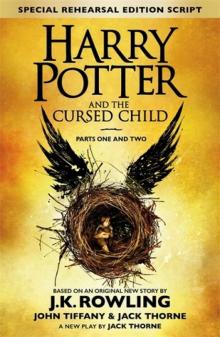 Harry Potter and the Cursed Child
Harry Potter and the Cursed Child Short Stories from Hogwarts of Power, Politics and Pesky Poltergeists
Short Stories from Hogwarts of Power, Politics and Pesky Poltergeists Quidditch Through the Ages
Quidditch Through the Ages The Ickabog
The Ickabog![Fantastic Beasts, The Crimes of Grindelwald [UK] Read online](http://i1.bookreadfree.com/i/03/19/fantastic_beasts_the_crimes_of_grindelwald_uk_preview.jpg) Fantastic Beasts, The Crimes of Grindelwald [UK]
Fantastic Beasts, The Crimes of Grindelwald [UK] Harry Potter and the Cursed Child: Parts One and Two
Harry Potter and the Cursed Child: Parts One and Two The Prisoner of Azkaban
The Prisoner of Azkaban Fantastic Beasts: The Crimes of Grindelwald
Fantastic Beasts: The Crimes of Grindelwald The Hogwarts Library Collection
The Hogwarts Library Collection Short Stories from Hogwarts of Heroism, Hardship and Dangerous Hobbies (Kindle Single) (Pottermore Presents)
Short Stories from Hogwarts of Heroism, Hardship and Dangerous Hobbies (Kindle Single) (Pottermore Presents) Harry Potter and the Deathly Hallows hp-7
Harry Potter and the Deathly Hallows hp-7 Hogwarts: An Incomplete and Unreliable Guide (Kindle Single) (Pottermore Presents)
Hogwarts: An Incomplete and Unreliable Guide (Kindle Single) (Pottermore Presents) Harry Potter and the Goblet of Fire hp-4
Harry Potter and the Goblet of Fire hp-4 The Christmas Pig
The Christmas Pig Harry Potter and the Sorcerer's Stone
Harry Potter and the Sorcerer's Stone The Order of the Phoenix
The Order of the Phoenix Harry Potter and the Prisoner of Azkaban hp-3
Harry Potter and the Prisoner of Azkaban hp-3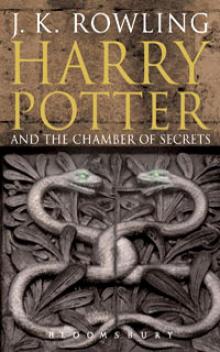 Harry Potter and the Chamber of Secrets hp-2
Harry Potter and the Chamber of Secrets hp-2 HP 3 - Harry Potter and the Prisoner of Azkaban
HP 3 - Harry Potter and the Prisoner of Azkaban The Half-Blood Prince
The Half-Blood Prince The Hogwarts Collection
The Hogwarts Collection Tales of Beedle the Bard
Tales of Beedle the Bard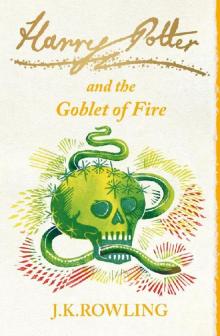 The Goblet of Fire
The Goblet of Fire Harry Potter and the Half-Blood Prince hp-6
Harry Potter and the Half-Blood Prince hp-6 Short Stories from Hogwarts of Power, Politics and Pesky Poltergeists (Kindle Single) (Pottermore Presents)
Short Stories from Hogwarts of Power, Politics and Pesky Poltergeists (Kindle Single) (Pottermore Presents) Harry Potter and the Sorcerer's Stone hp-1
Harry Potter and the Sorcerer's Stone hp-1